Cars Land
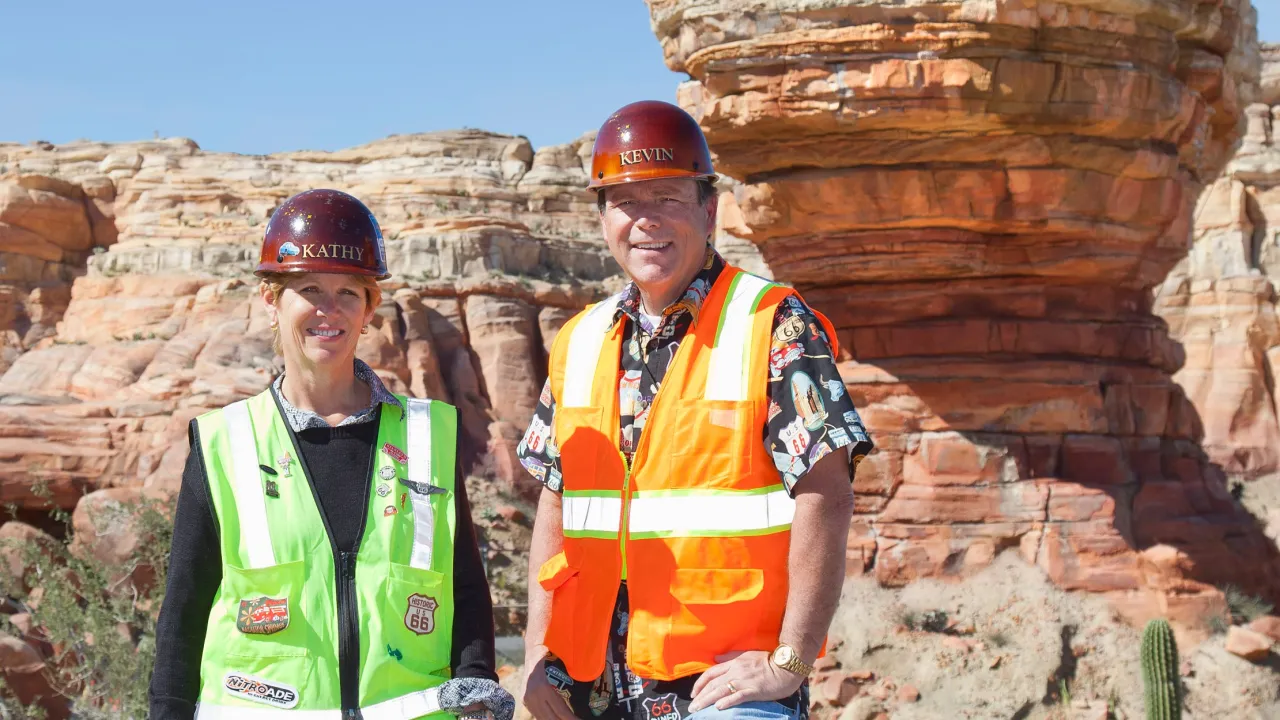
Believe it or not, it had been shortly after California Adventure opened when – according to Leslie Iwerks’ The Imagineering Story – Imagineer Kevin Rafferty had been tasked by Barry Braverman to “come up with something big” that could “bring more Disneyland DNA into Disney’s California Adventure.” Luckily, Rafferty had an idea he’d been itching to sketch out.
Today, no one who lived at the turn-of-the-century time of Main Street, U.S.A. is still alive, even if the image of it still resonates. When you think about it, though, when Disneyland opened in 1955, “Main Street” was only 55 years in the past; near enough that parents and grandparents visiting the park would’ve been likely to recall it from their childhoods. To Rafferty’s thinking, that time 55 year time difference applied to 2005 would carry us back to the 1950s and ’60s – to neon-lit downtowns of malt shops, diners, poodle skirts, greasers, and of course, cars.
California’s “car culture” was one of the state’s most well-known features, and since the dawn of the great cross-country road trip way back in mid-century America, California had been the destination marked by an X on countless unfurled maps; the endpoint of millions of family vacations.

A “Carland” could not only stand alongside California Adventure’s existing odes to aviation, agriculture, stardom, and beach life, but could be the first of California Adventure’s lands to turn back the clock, transporting guests to a past time that parents and grandparents would remember as fondly as their own elders had remembered Main Street.
Actually, plans for a Carland were fairly deep into development when Rafferty learned that the last film Pixar planned to produce for Disney under their soon-to-end distribution deal was a movie called Cars. At first, Pixar’s Cars just joined the fray of other automotive movie nods in Rafferty’s neon town… But John Lasseter recalled to Iwerks, “I remember looking at the drawings, and I go, ‘You know, I’m sorry, you guys… If I was [visiting California Adventure,] I would want to go to Radiator Springs. That’s what I would want to see. I would want to go and visit this town and be in this environment.”

It might’ve been a pipe dream until the 2007 purchase of Pixar, when John Lasseter became the principal creative for Walt Disney Imagineering, overseeing both Pixar and Walt Disney Animation Studios and their incorporation into the parks. As luck would have it, the newly-assembled team of Bob Iger, Bob Weis, Kathy Magnum, Kevin Rafferty, and John Lasseter had the ambition and forethought to make it happen.
Cars Land was officially announced with the rest of California Adventure’s reimagining on October 17, 2007. Replacing the Bountiful Valley Farm section of “a bug’s land” and then extending outward onto one of the last pieces of Disneyland’s former parking lot – surviving until then as the “Timon” section – Cars Land would be the unquestioned anchor of California Adventure’s rebirth, aiming to open as the expansion’s final puzzle piece.
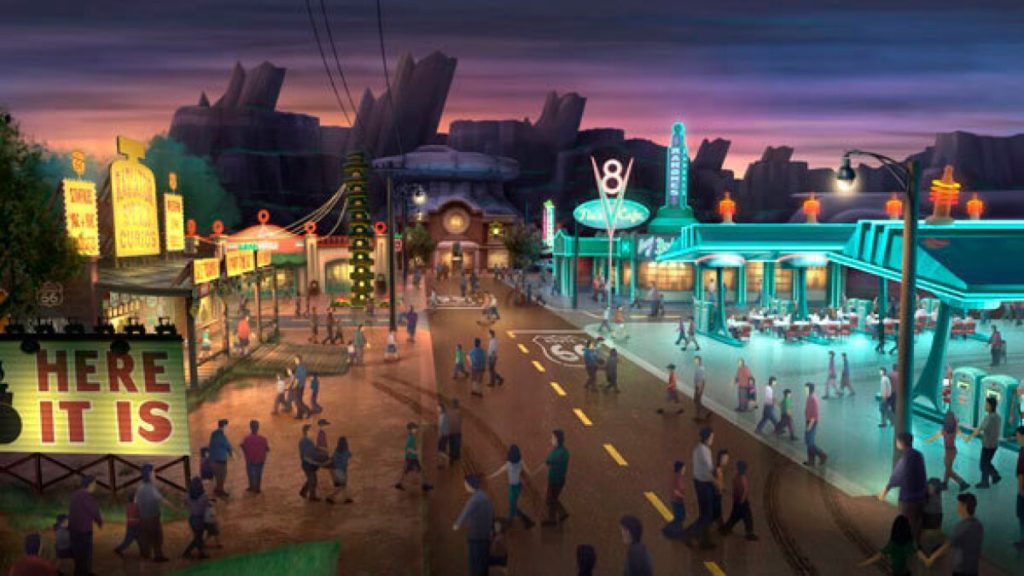
As tends to be the case, fan reaction was swift and merciless. Online commentators decried Cars as the first Pixar film to target kids rather than all ages at best; the studio’s worst movie at worst. The rallied against the film’s seemingly-blatant emphasis on merchandising, asserting that the movie was practically designed in a laboratory by Disney Consumer Products to sell retail products.
Had anyone really been clamoring to step into Radiator Springs? What did Cars have to do with California, anyway? As they’d soon do for Pandora – The World of Avatar, many blogs launched no-confidence campaigns against the concept, blustering about how Cars simply hadn’t earned a permanent, full land in a Disney Park – even California Adventure had standards, after all…
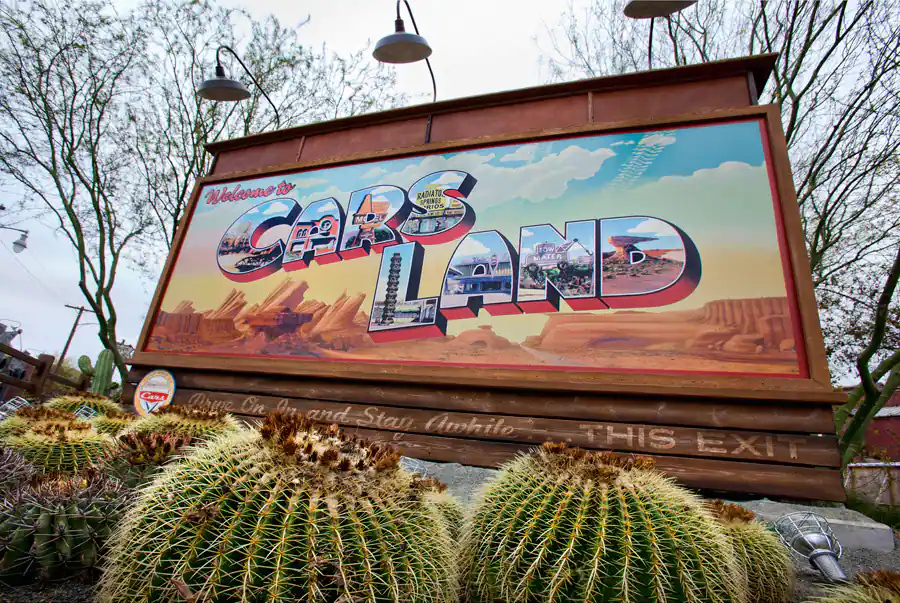
Of course, any complaints were quickly silenced when Cars Land made its debut alongside Buena Vista Street on June 15, 2012. We dove deep into the history of “Carland” and the development of the final Pixar product in our standalone Modern Marvels: Cars Land feature, so make the jump there to pick up on the story of the land’s design and its astounding statistics. But suffice it to say that the 12-acre land wasn’t just the largest expansion in Disney Parks’ history at that time; it was also the first of a new kind of design ethos.
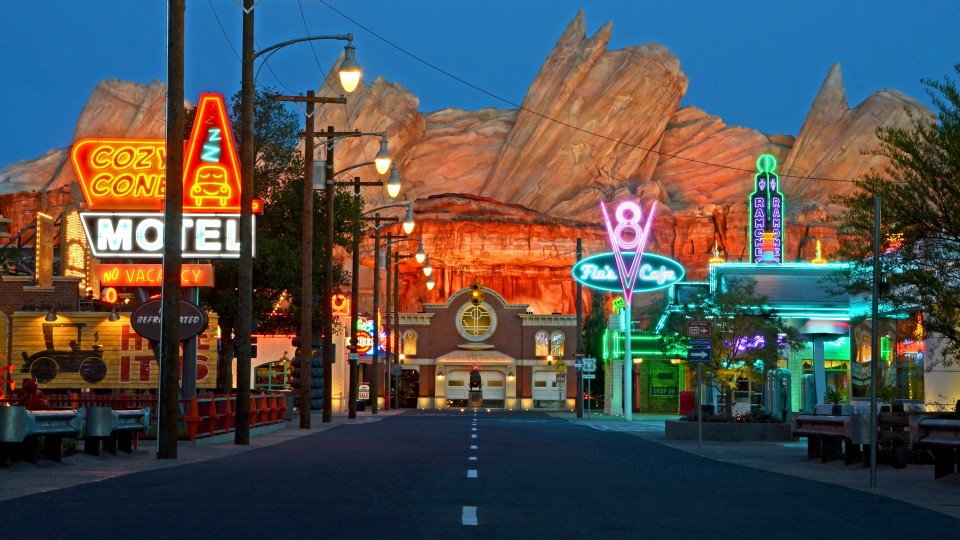
No doubt jump-started by the 2010 opening of The Wizarding World of Harry Potter at Universal’s Islands of Adventure in Florida, an entirely new era of themed entertainment design had begun. Rather than mere rides, the race was on across the industry to develop immersive “Living Lands” – to construct real, to-scale environments plucked right from the screen, allowing guests to not just ride the movies, but to live them.
As in The Wizarding World’s Hogsmeade, Cars Land recreated to jaw-dropping effect the town of Radiator Springs and outlying deserts of the Ornament Valley. In so many ways, the land itself is an E-Ticket. Guests get to step inside of Luigi’s Casa della Tires as they queue for Luigi’s Flying Tires – a loving (but doomed) return of the Flying Saucers that shortly occupied Disneyland’s Tomorrowland in the ’50s. Likewise, Mater’s Junkyard Jamboree serves as a second kinetic, scrambling family flat ride, adding still more immense capacity to the park.
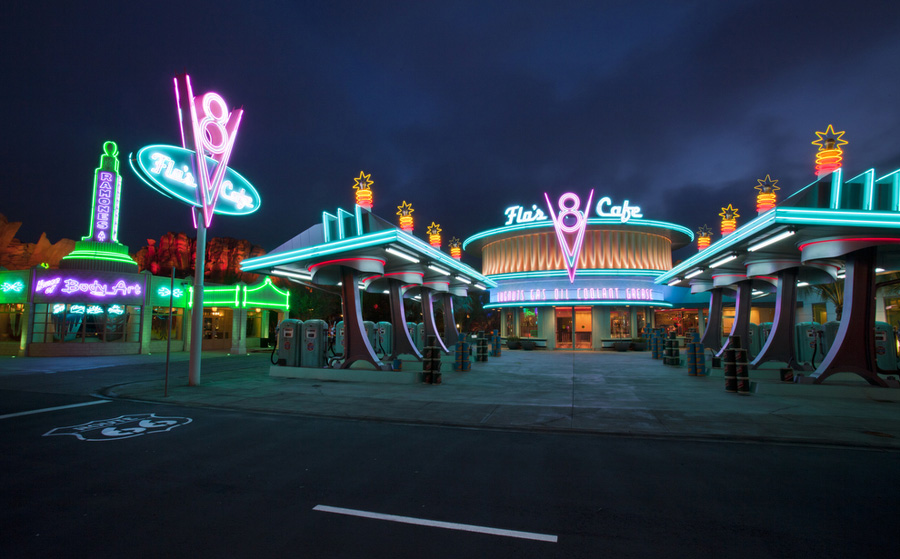
But there’s entertainment to be had throughout the land. Dining at Flo’s V8 Cafe is a rite of passage for any Cars enthusiast, listening to automotive renditions of classic jukebox tunes while enjoying classic American diner food from swirl-top tables; queueing up at one of the Cozy Cones for “Chili Cone Carne,” “pop-cone” or an ice cream cone; visiting Sarge’s Surplus Hut or Stanley’s Radiator Springs Curios for “road trip” memorabilia.
The traffic light at the cross street blinks slower on every third blink; characters from Cars drive up and down the street, parking to meet-and-greet with guests; the neon springs to life each evening at sunset in a light show choreographed to The Chords’ “Sh-Boom (Life Could Be a Dream).” Cars Land provides everything California Adventure needed: depth, texture, idealization, history, reverence, and character.
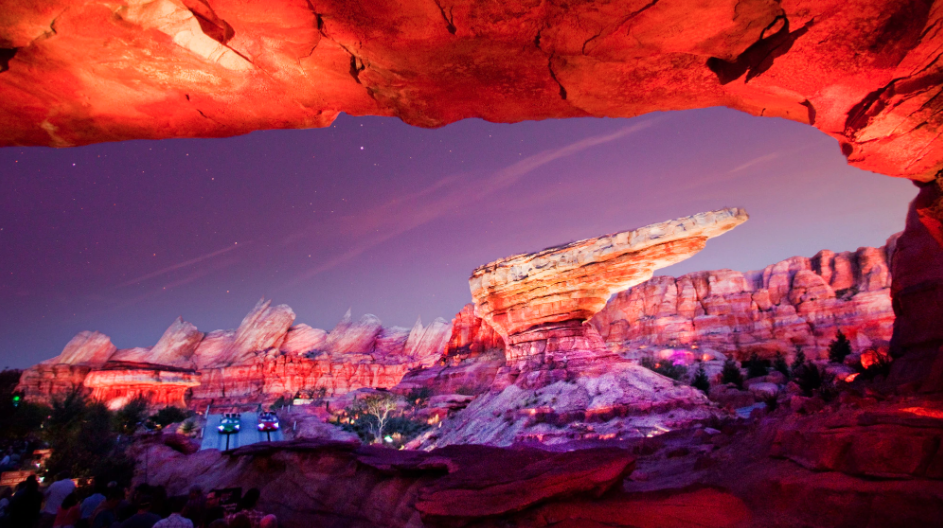
However, the most impressive thing about Cars Land is not just the perfectly recreated town, but the massive, endless Cadillac Range that wraps around it – one of our “Natural” Wonders of the Theme Park World. The towering peaks (as in the film, vaguely shaped like Cadillac tail fins) are perhaps the most stunning and picturesque backdrop in any park, as they soar a hundred feet into the distance.
The best way to see them is on the land’s E-ticket (and, by far, the now-signature ride of California Adventure), the Modern Marvel: Radiator Springs Racers, a high-energy dark ride / thrill ride combo borrowing the technology behind Epcot’s Test Track. In fact, that in-depth feature drives through the story of Cars Land’s creation and experience.
In short, Cars Land was – and still is – a California Adventure-exclusive masterpiece. The keystone of the park’s reinvention, it remains a landmark project, reportedly costing $500 million in pursuit of the park’s rebirth.
Putting it all together
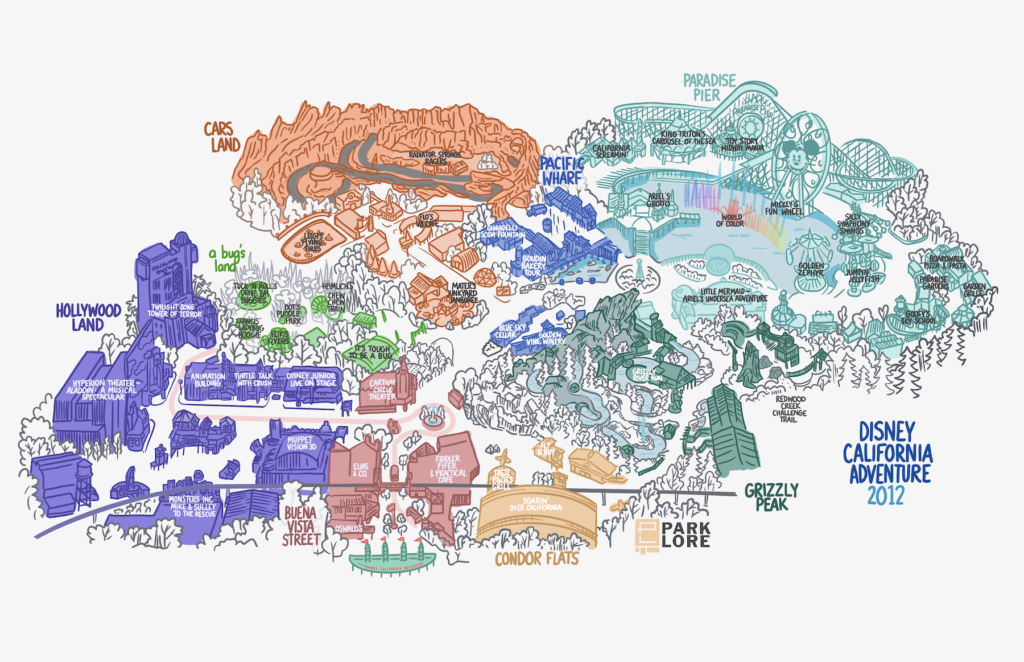
Was the “new” California Adventure a perfect theme park? Of course not. But after its re-opening, it did represent something magnificent, and never before seen at a Disney theme park: a total rebirth; a complete transformation. Not just new rides and shows and restaurants, but a new core story; a new identity.
California Adventure had been flawed at its foundation, and Disney Imagineers tackled the problem head on. They dismantled the park’s stories and settings to their rivets and rebuilt an environment that met and even exceeded Disney’s best. Few could’ve imagined that just a decade earlier.
“DCA 2.0” was a testament to what can happen when designers do it right. Compare the park’s opening map in 2001 to its map after its rebirth, just 15 years later. The changes are practically innumerable. You’ll see new rides and shows, but there’s so much the map can’t show: the new alleys and details and design elements that recast the park as a historic, reverent land of habitable stories.

From the Carthay Circle Theater to Radiator Springs; the Hollywood Tower Hotel to World of Color; Ariel’s Undersea Adventure, Grizzly Peak Airfield, Pacific Wharf, Aladdin: A Musical Spectacular, and the Golden Vine Winery… Disney California Adventure was – truly – a new park with a new identity and a new spirit. No longer a spoof of California, the park was now a celebration of its history, legends, landscapes, food, car culture, entertainment, and industries.
But most importantly, it was a perfect companion and complement to Disneyland, crafted from the same concept: both parks depicted reverent, idealized, romanticized places that people yearn to see. Disney California Adventure deserved its spot across from Disneyland. And that is saying something.
The tides turn
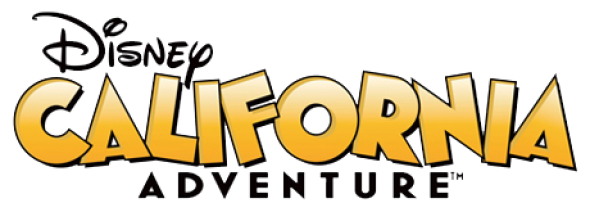
Disney California Adventure’s 2012 relaunch seemed to orient the park in a new direction. The park that had been “too much California, not enough Disney” seemed to find a long-sought balance. Sure, that came in the form of beautifully-designed lands evoking historic, idealized Californian settings that were then stuffed with rides themed to Cars, The Little Mermaid, Monsters Inc., A Bug’s Life, Aladdin, and Toy Story…
But hey, the future of California Adventure seemed bright, and continued investment – perhaps to Condor Flats or Hollywood Land – would almost certainly see the “DCA 2.0” ethos spread to overlooked corners of the park in continued phases. At this rate, it didn’t seem like it would be long until California Adventure reached its ideal, built-out state; a park anchored by distinctly Californian E-Ticket, thoughtfully filled with characters, and bringing to life historic lands just like Disneyland did.
But pretty quickly, things began to change. It turned out the “DCA 2.0” might’ve been a short-lived phase. Though the pendulum hung perfectly between “Disney” and “California” in 2012, it kept swinging…
Could the park that had been “too much California, not enough Disney” find itself with exactly the opposite problem? That leads us to the final installment of our epic history of Disney’s California Adventure: Part III where we’ll explore the potential undoing of Disney’s billion dollar California reimagining and the surprising second wave of reinvestment that’s pulled the rug out from under many Imagineering fans…
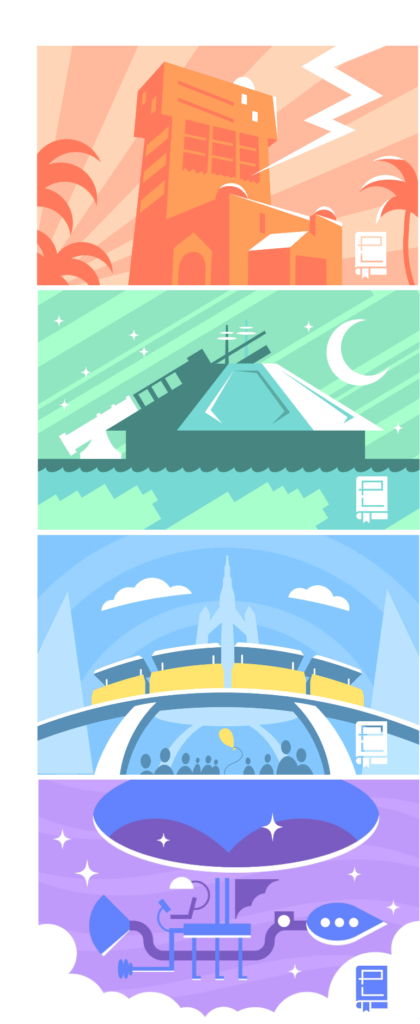
Thank you so much for reading. Now, it’s your turn to join the story. If you enjoy spending time falling down the “rabbit hole” of Park Lore’s in-depth, ad-free, member-supported stories, consider becoming a Member for as little as $2 / month.
Members can unlock rare concept art in every tale, reveal attraction audio streams in select stories, gain access to over a hundred exclusive articles in our quick-read Extra Features and in-depth Special Features collections, gain exclusive podcast extras, and receive an annual member card and merch in the mail! (Plus, y’know, supporting research-based, ad-free, clickbait-free, in-depth theme park writing!)


